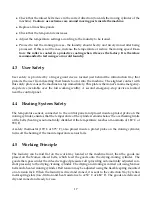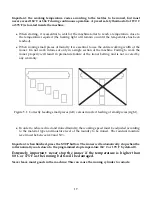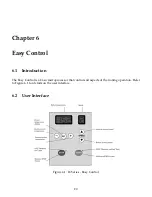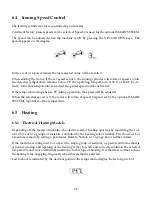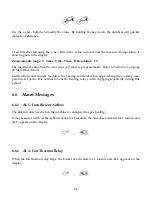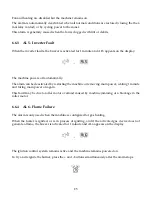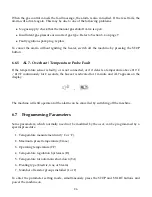
Lengths over 25 feet (6.1m) should use larger piping.
Pipe joint compounds that resist the action of gas must be used. DO NOT USE TEFLON
R
/PTFE
TAPE.
IMPORTANT: Be certain the ironer is configured for the type of gas being used. The gas type is
shown on the serial sticker on the electrical panel of the unit.
Inlet Pressure
Use a manometer to verify that the inlet pressure meets the following requirements:
Natural Gas service must be supplied at 8-14 inches of water column pressure.
LP Gas service must be supplied at 11-14 inches of water column pressure.
If the incoming gas pressure exceeds the above, install a locally obtained gas regulator that has
sufficient BTU capacity to supply the machine (Maxitrol 325-5AL for up to 300,000 BTU, 327-7L
for up to 900,000 BTU or equivalent). A chattering gas valve indicates improper line pressure, not
a faulty gas valve.
Manifold Pressure (Secondary)
Be sure to check the manifold pressure. Use a manometer to verify that the manifold pressure
matches the information on the serial sticker and the type of gas being used. A separate gas
regulator (locally obtained) must be installed if the incoming line pressure is greater than 14 inches
water column pressure.
1. Connect the manometer to the pressure connection on the gas valve (disconnect gas service).
2. Restore gas service and determine the pressure while the burner is ignited. The pressure
must match the indicated manifold pressure on the serial sticker.
Gas Conversion
Notice: Do not connect a machine configured for Natural Gas to LP Gas service or
vice-versa without a qualified service technician doing a proper conversion. After the reconfigura-
tion is complete, the manifold pressure must be verified. See Section A on page 44 for conversion
details.
3.5
Exhaust Requirements
For best results, install the machine near an outside wall in order to keep the exhaust duct length
as short as possible, and to provide a source of make-up air. The rear of the ironer should not
be blocked. Blocking the air inlets prevents proper combustion, and will yield poor results, and
possibly harmful combustion byproducts. See recommended exhaust style in Figure 3.3 on page
13.
Important: Do not interrupt the flow of make-up air or the exhaust!
11





















